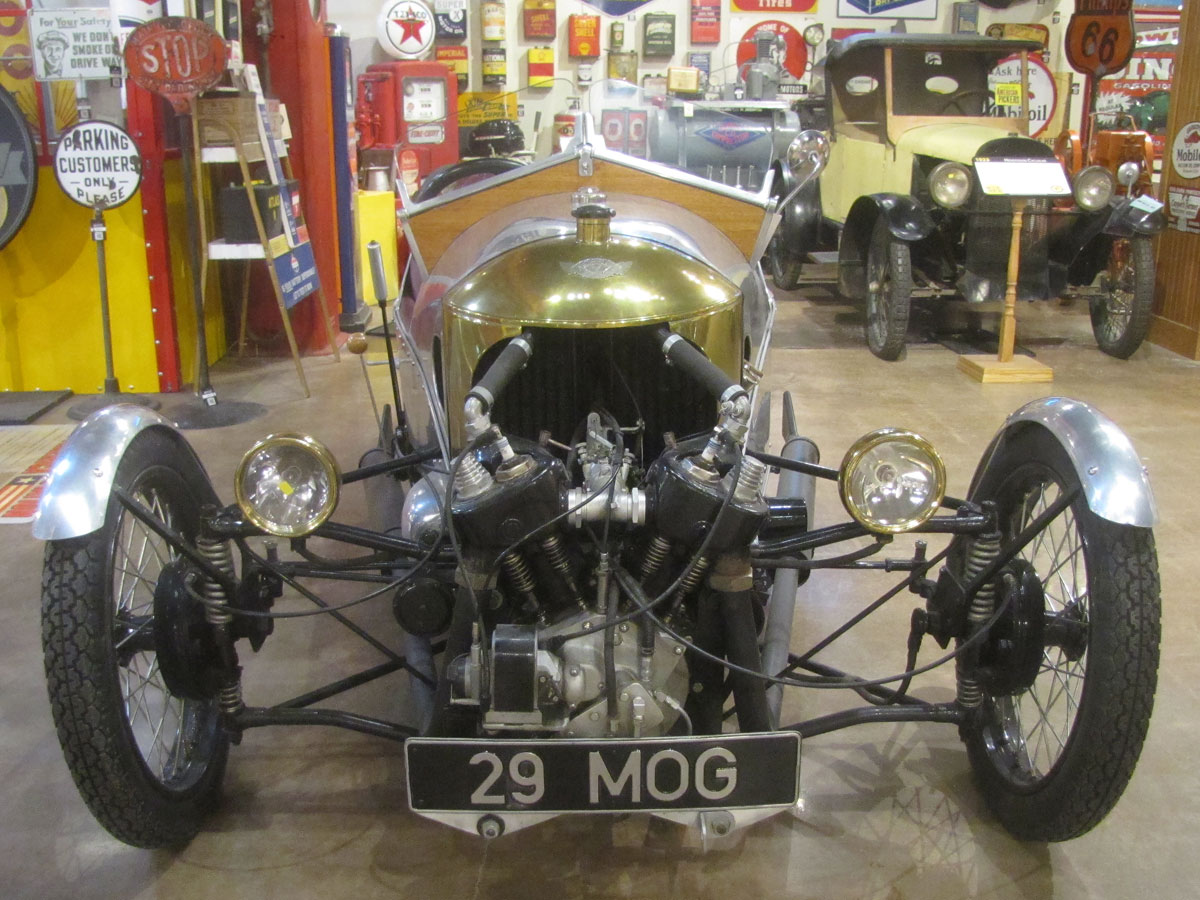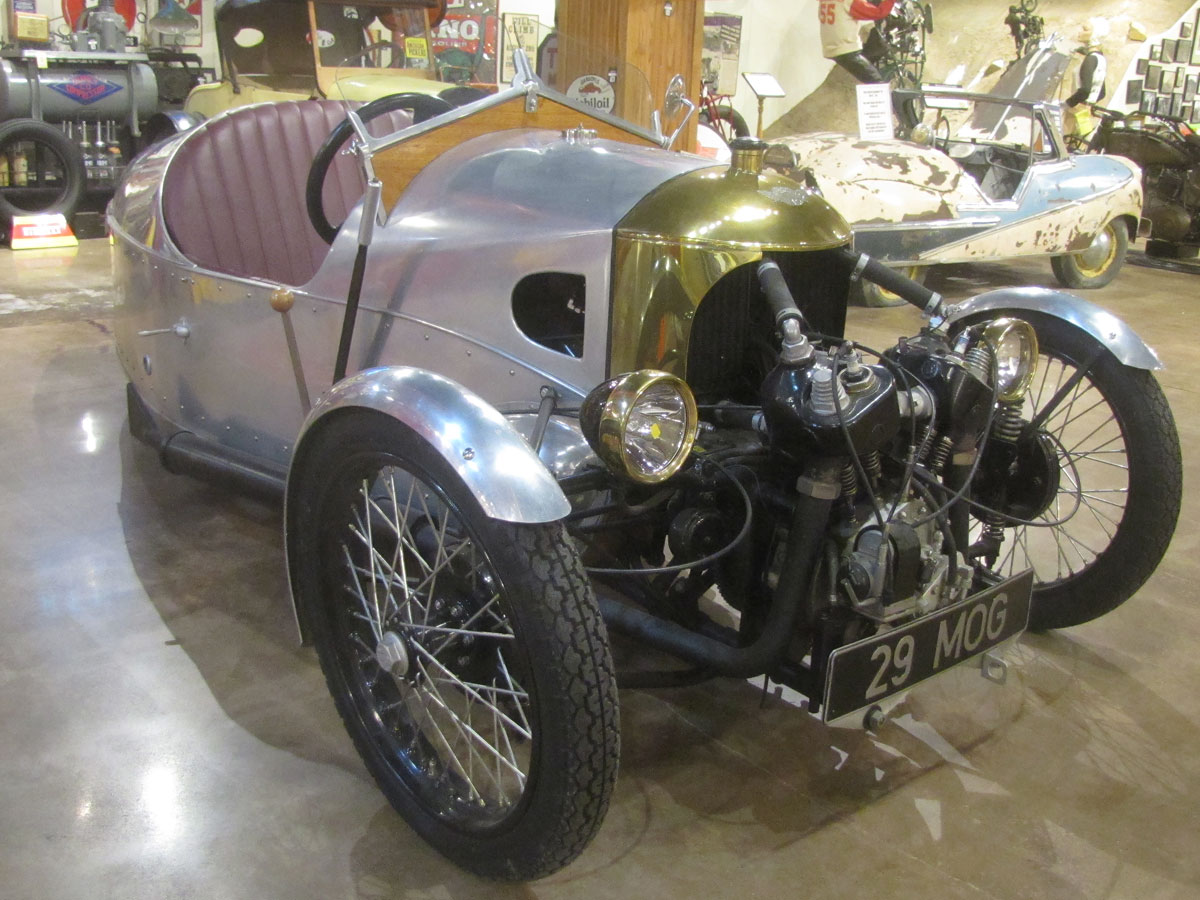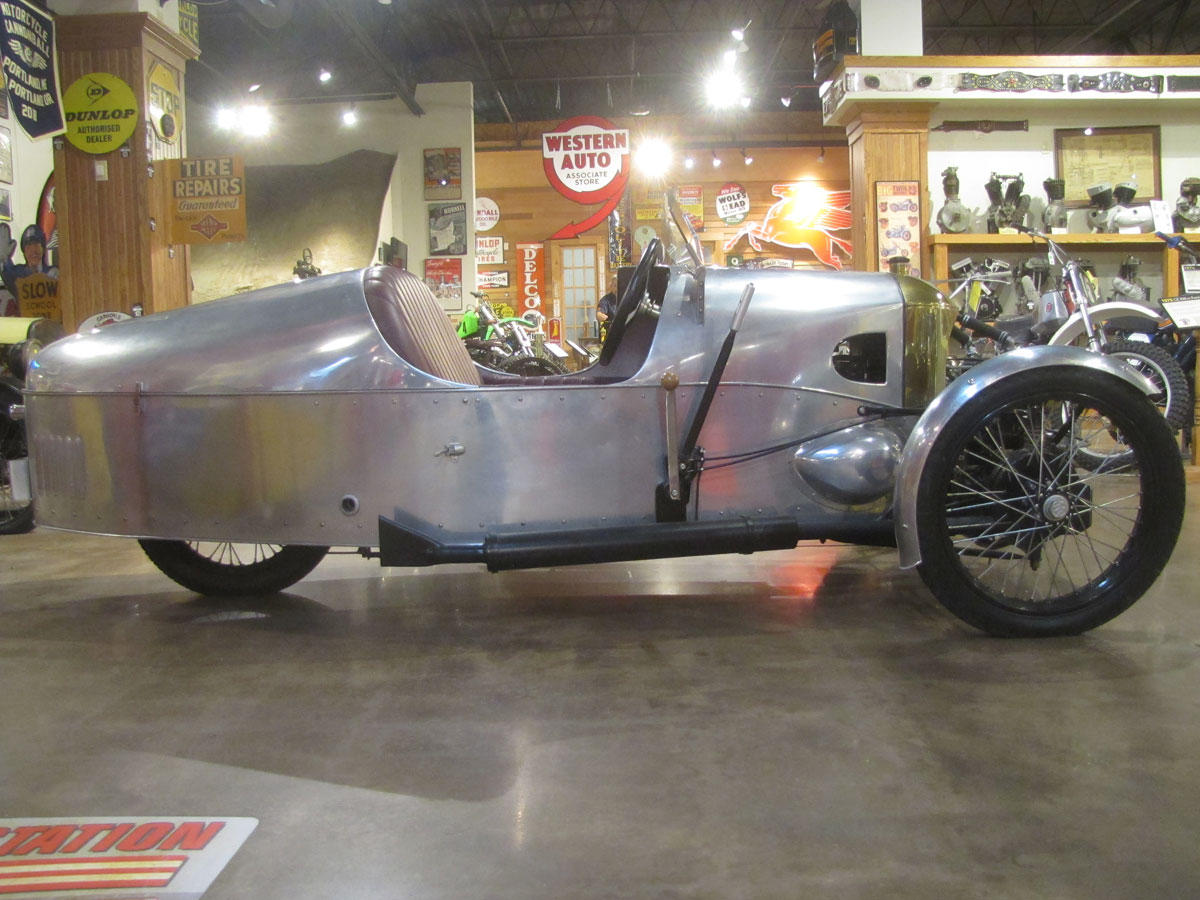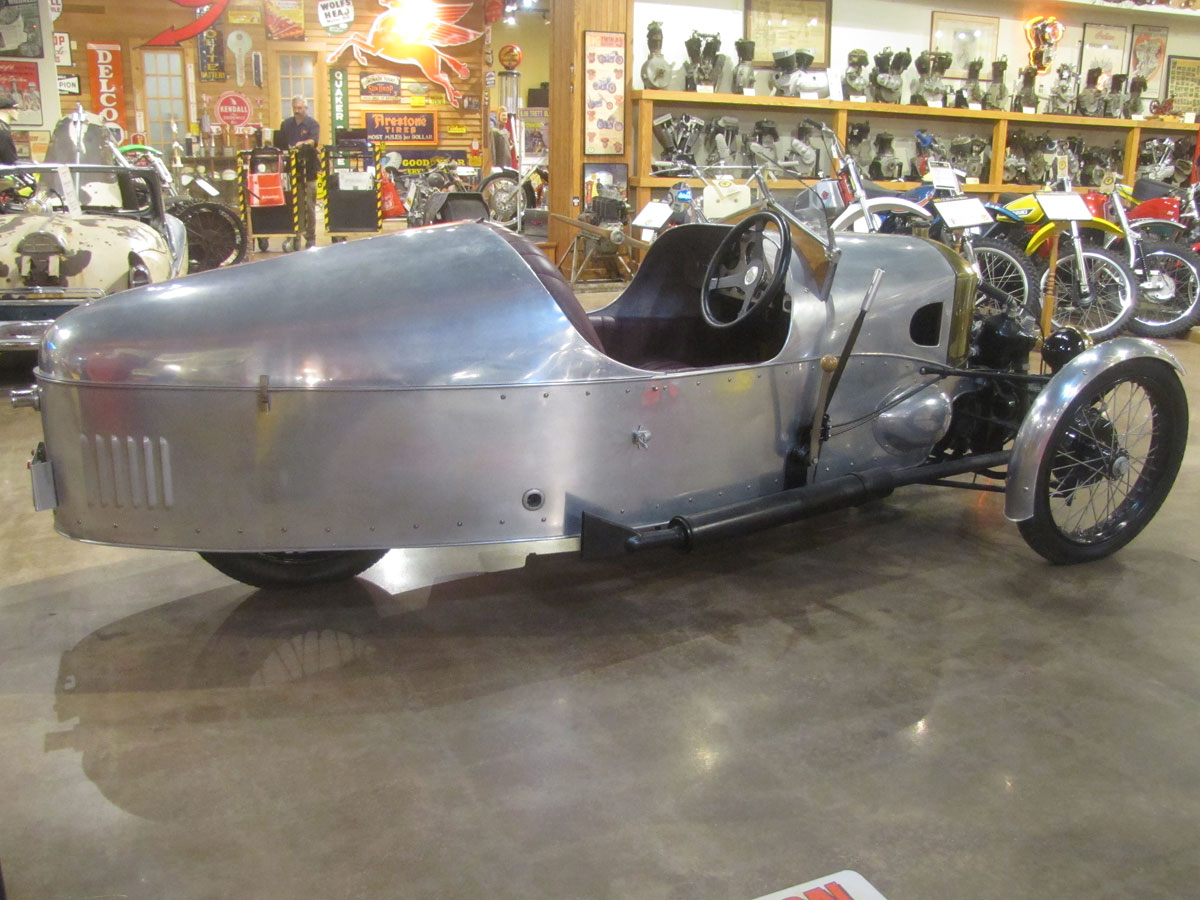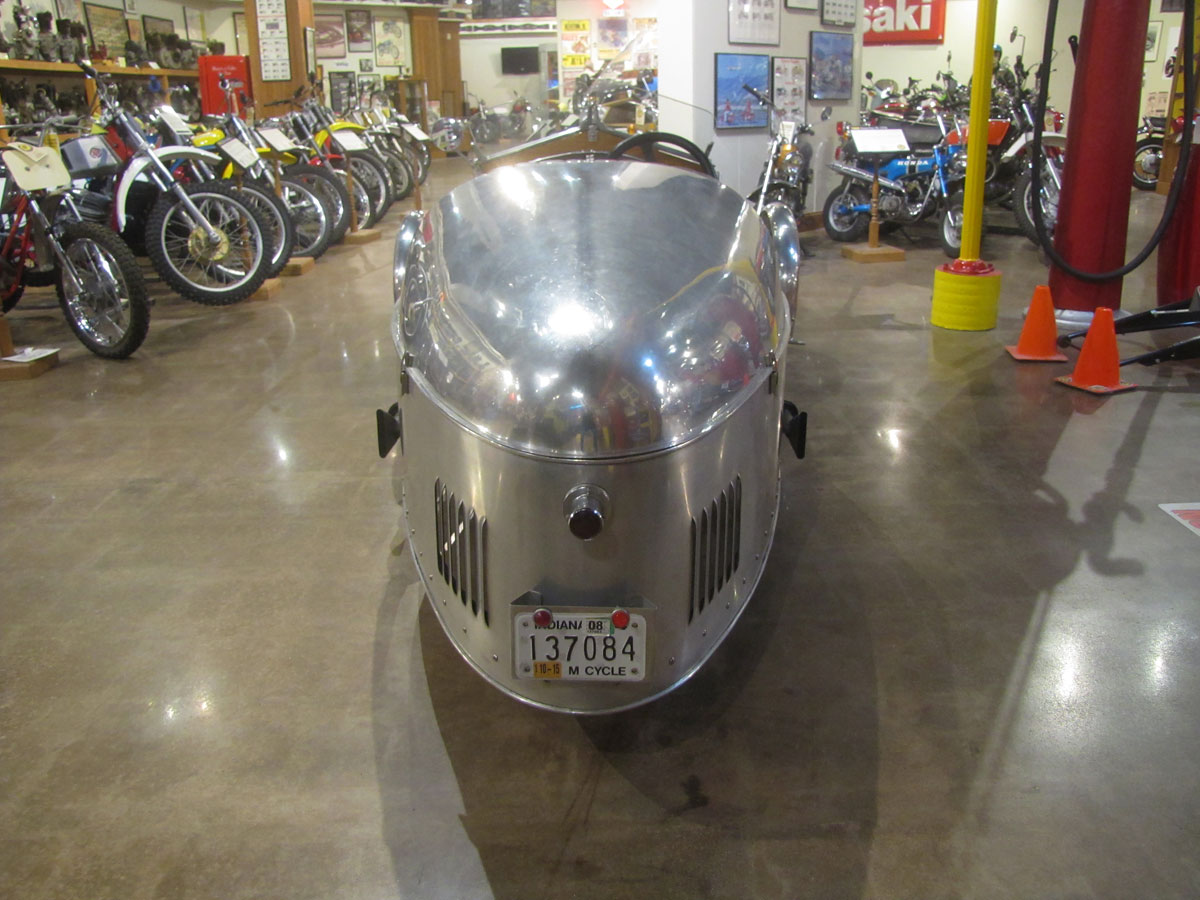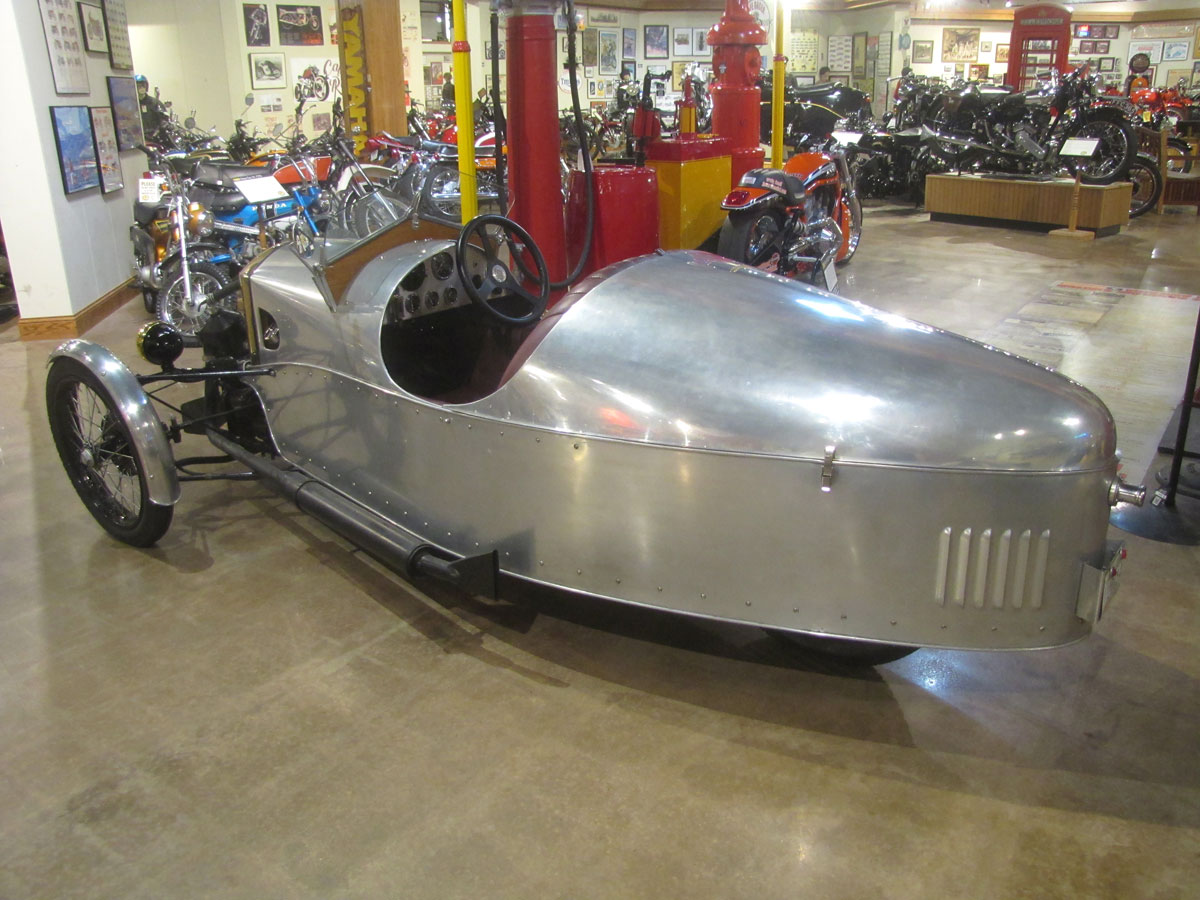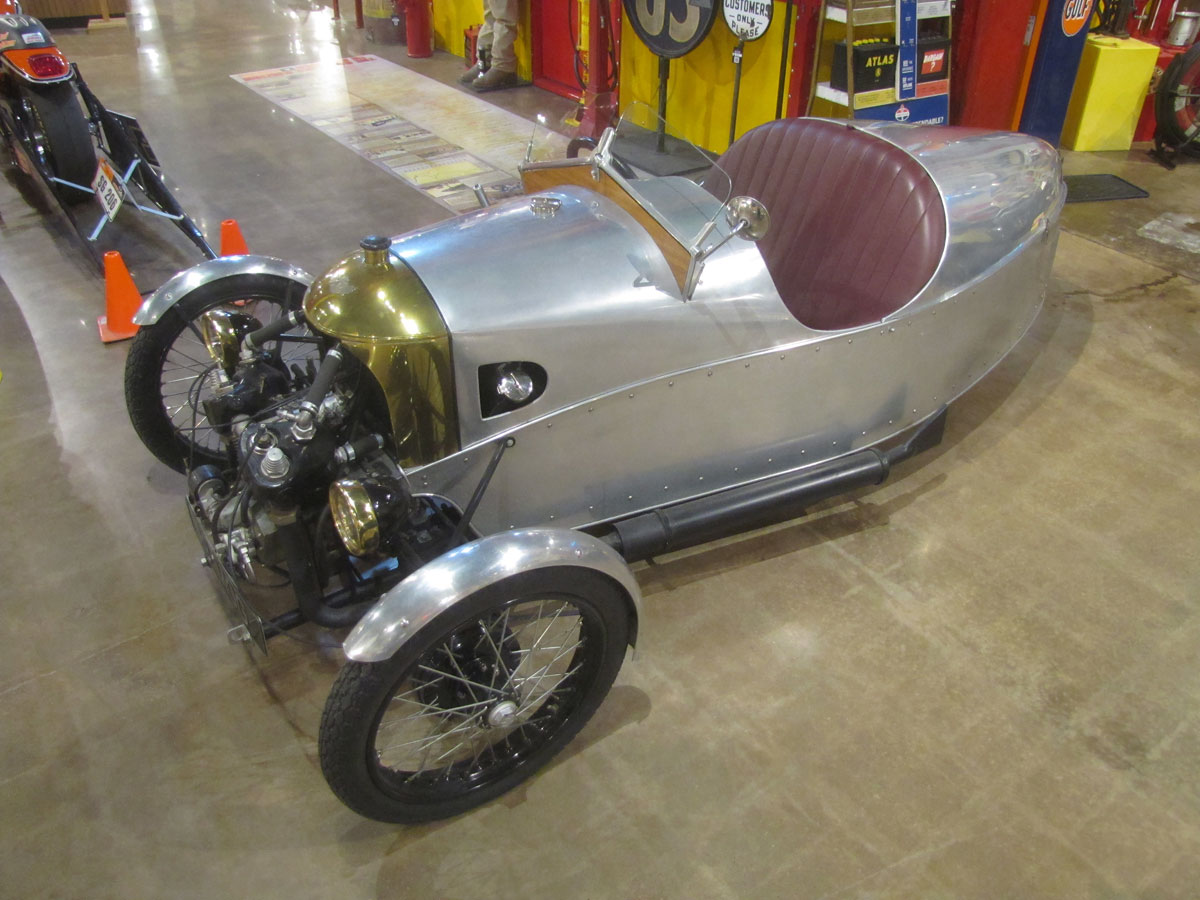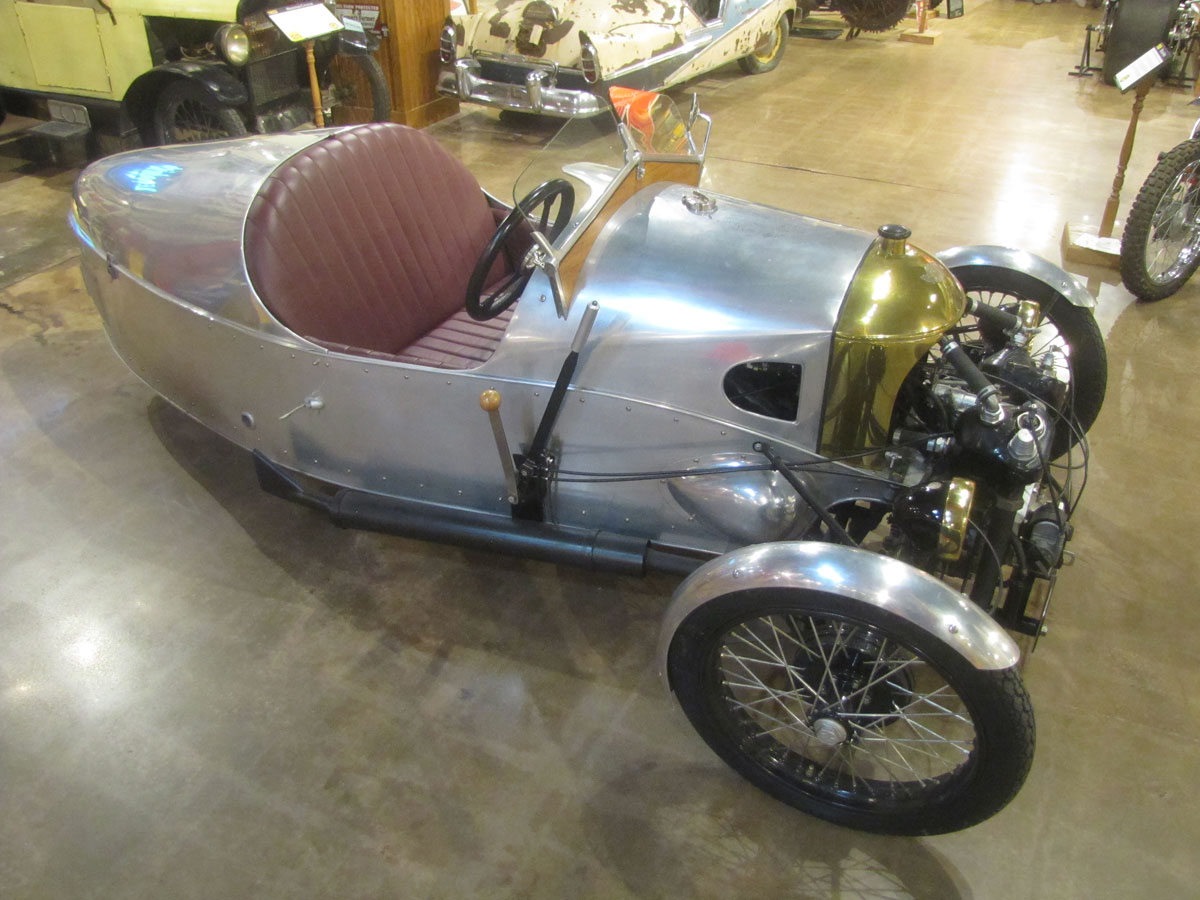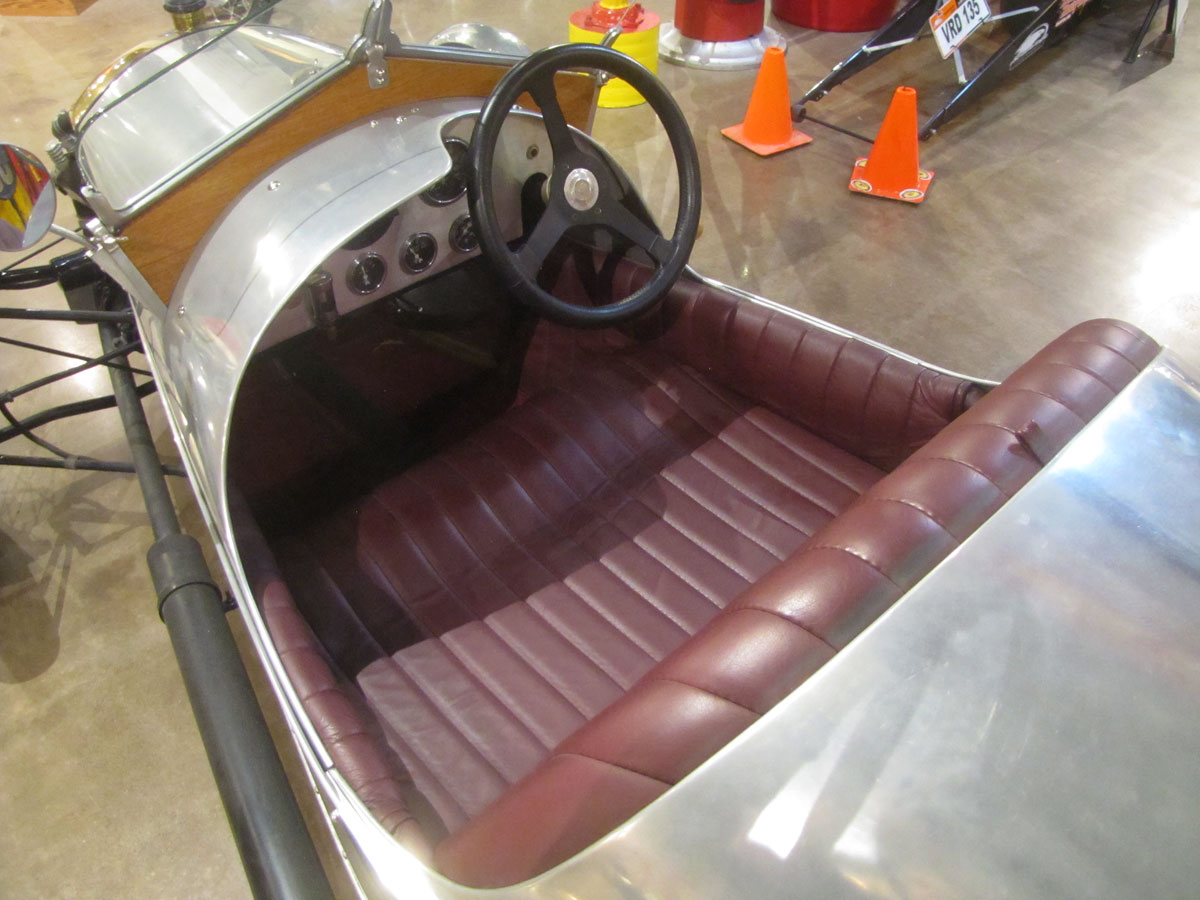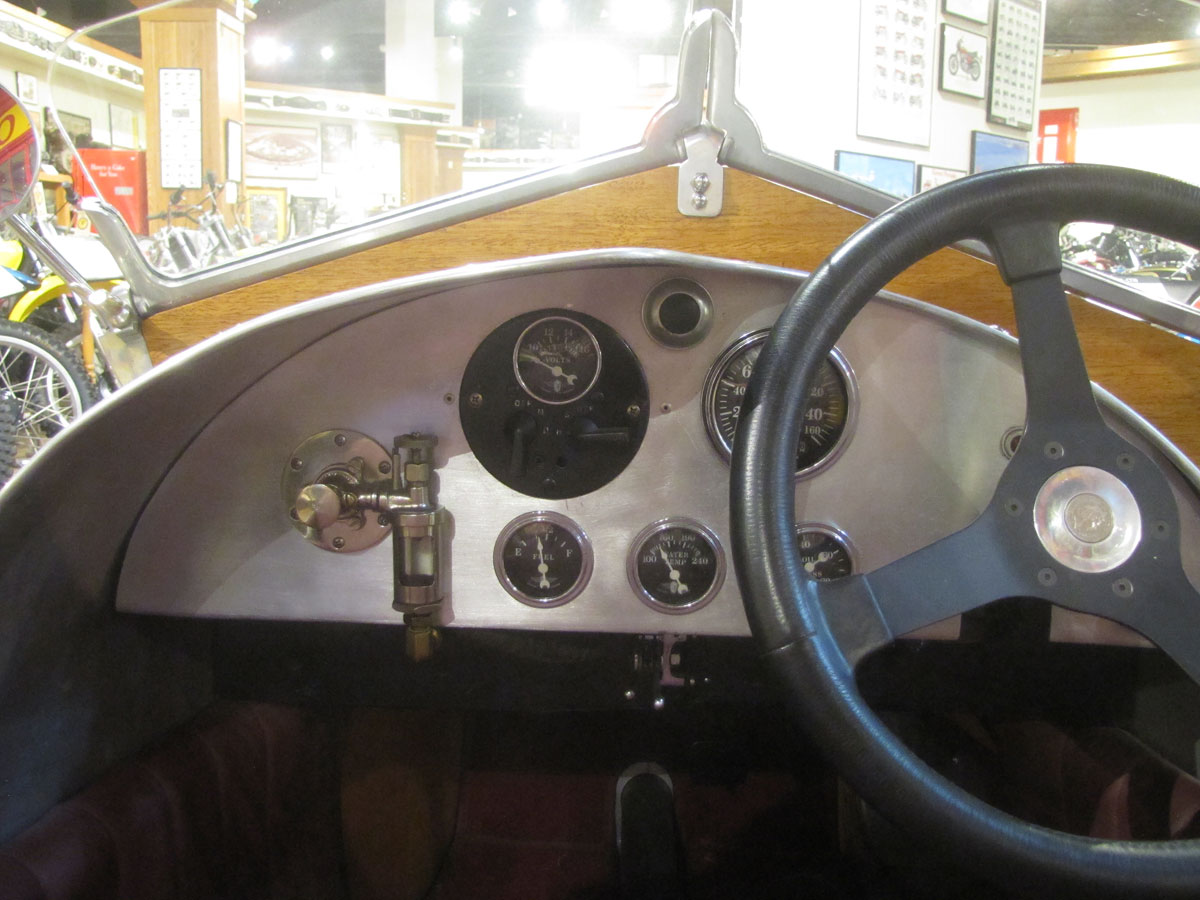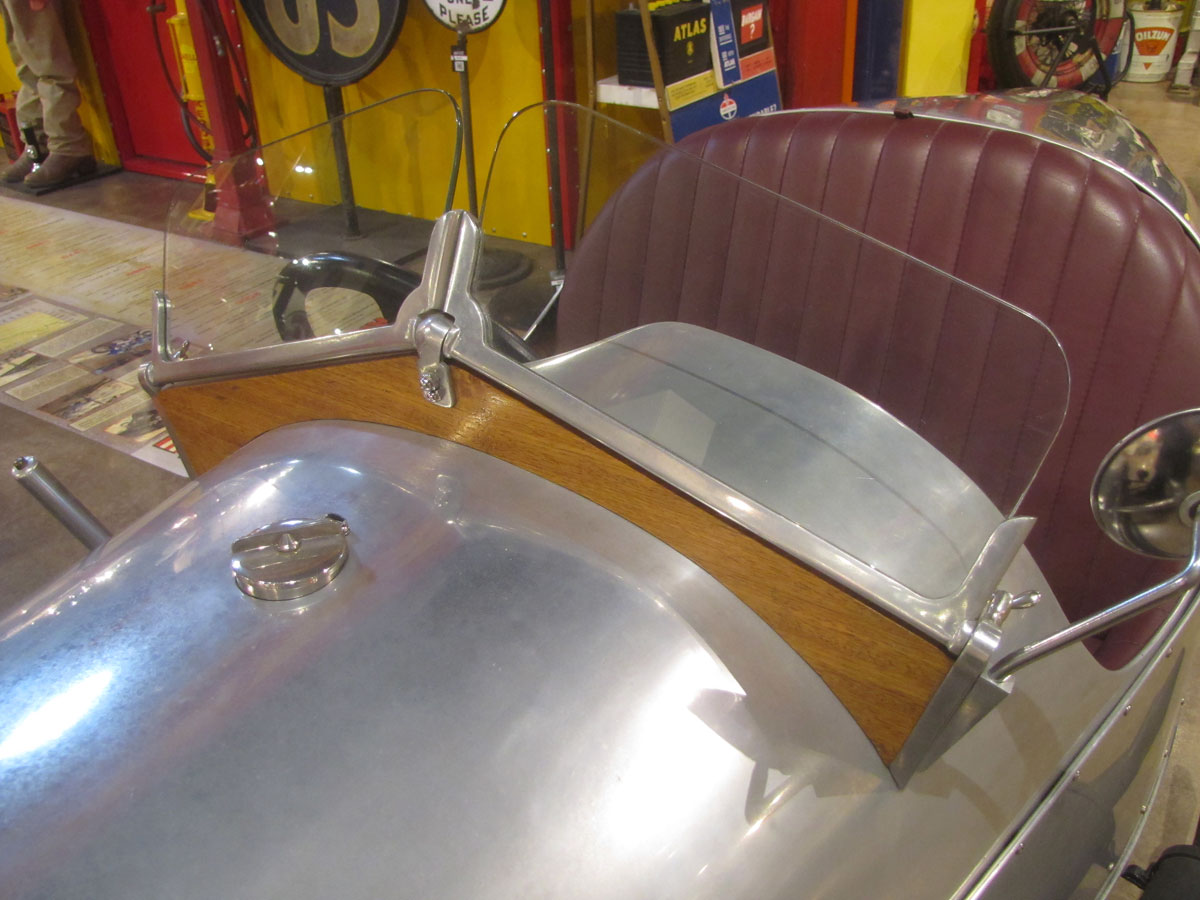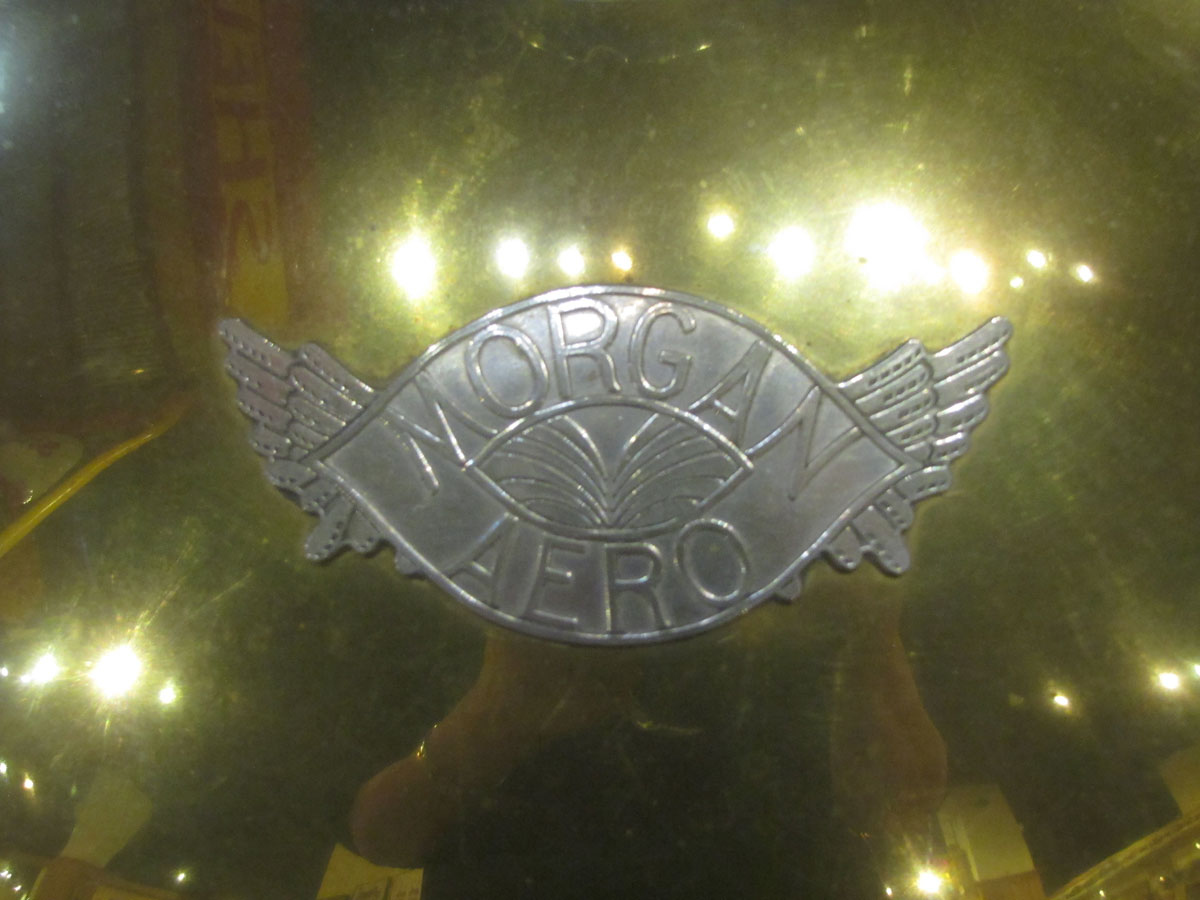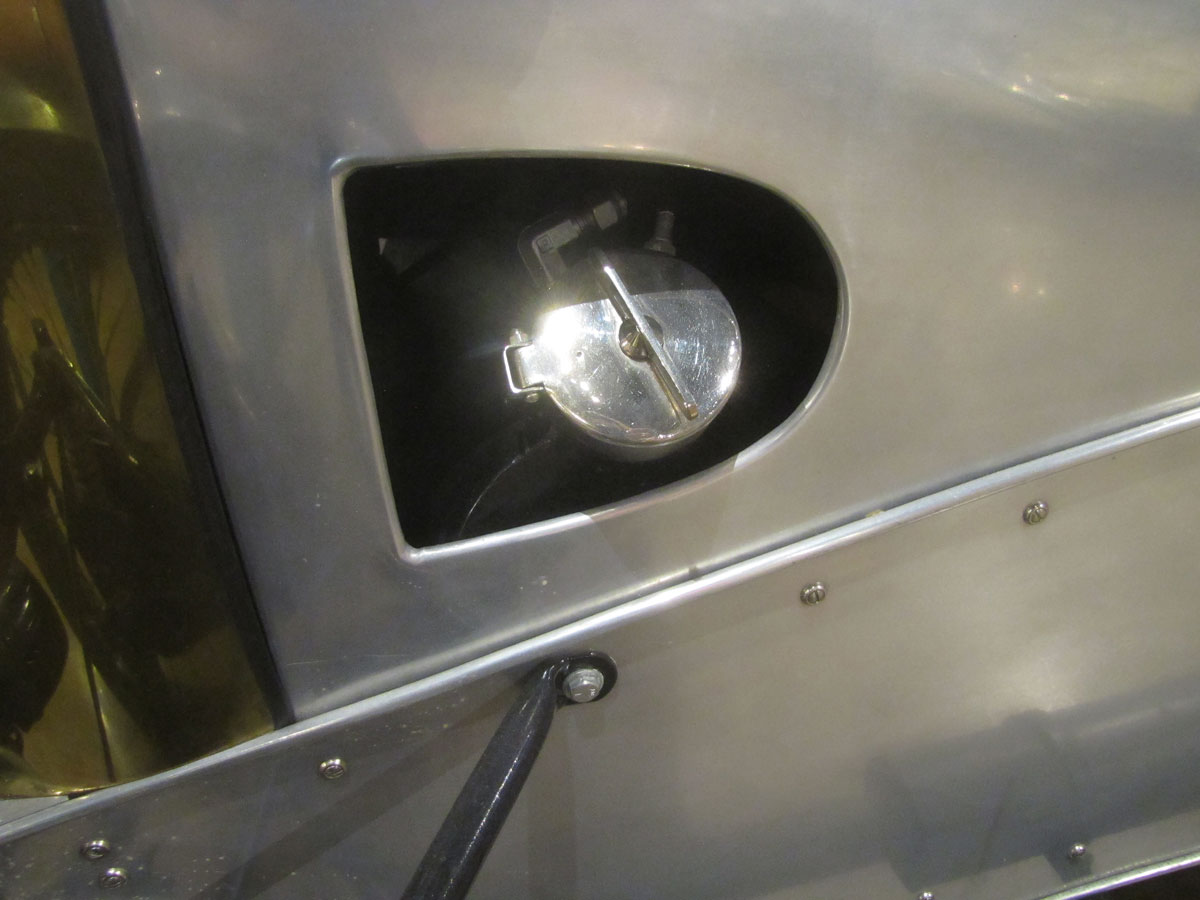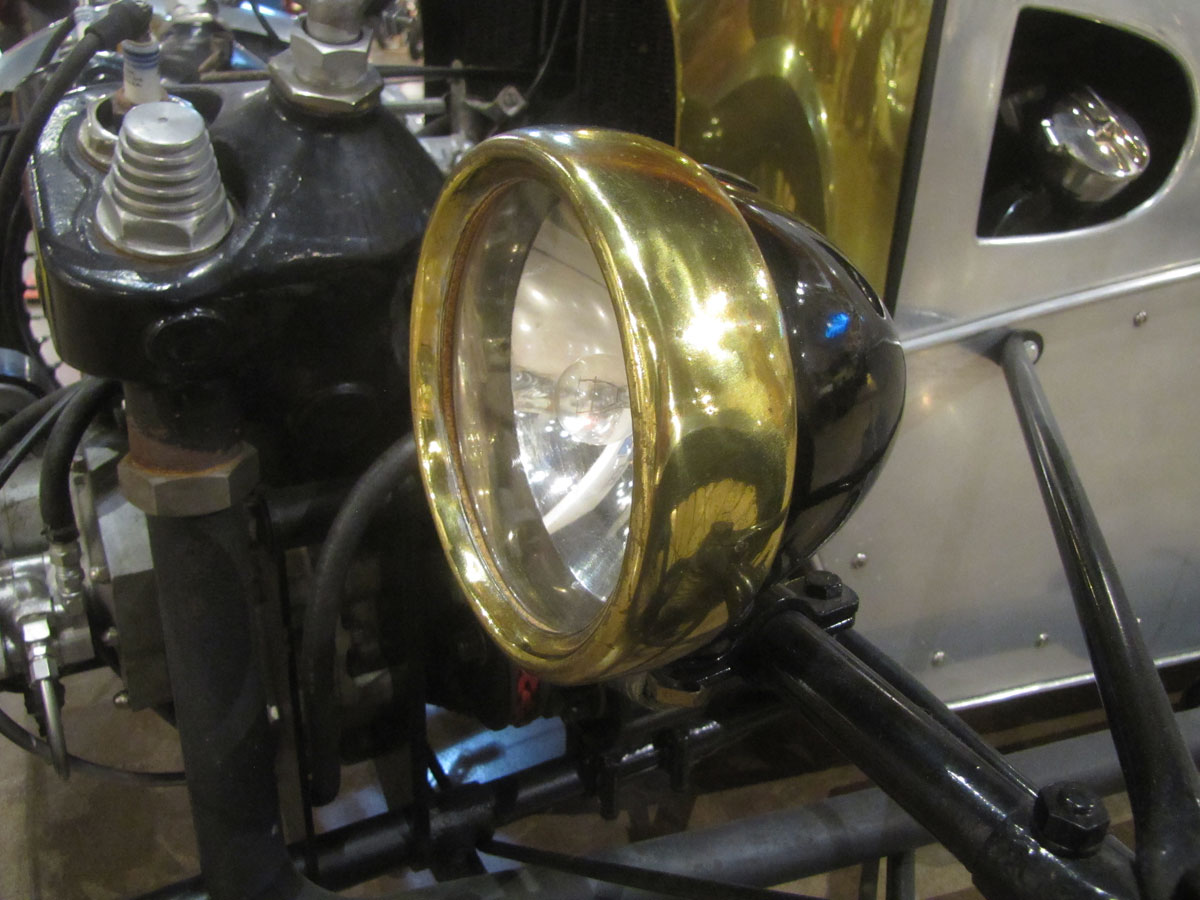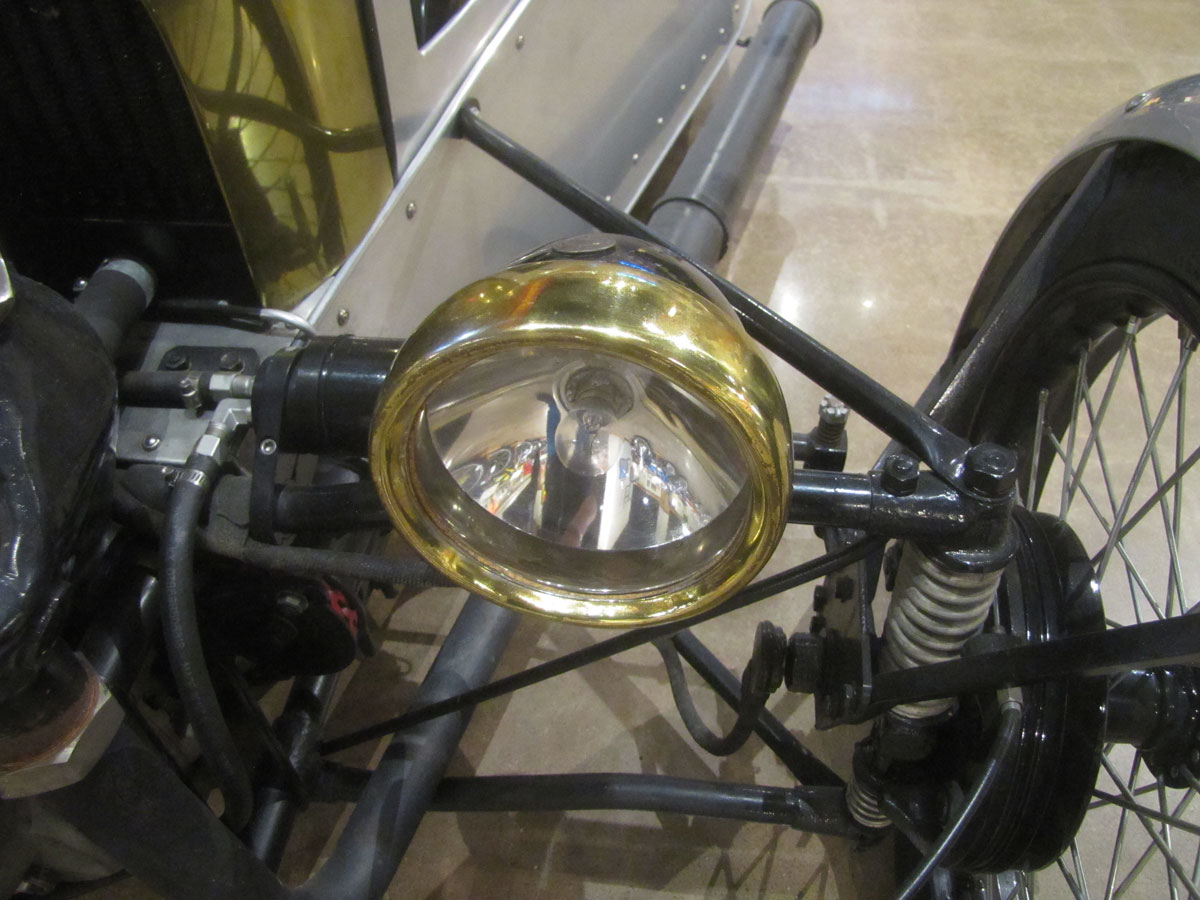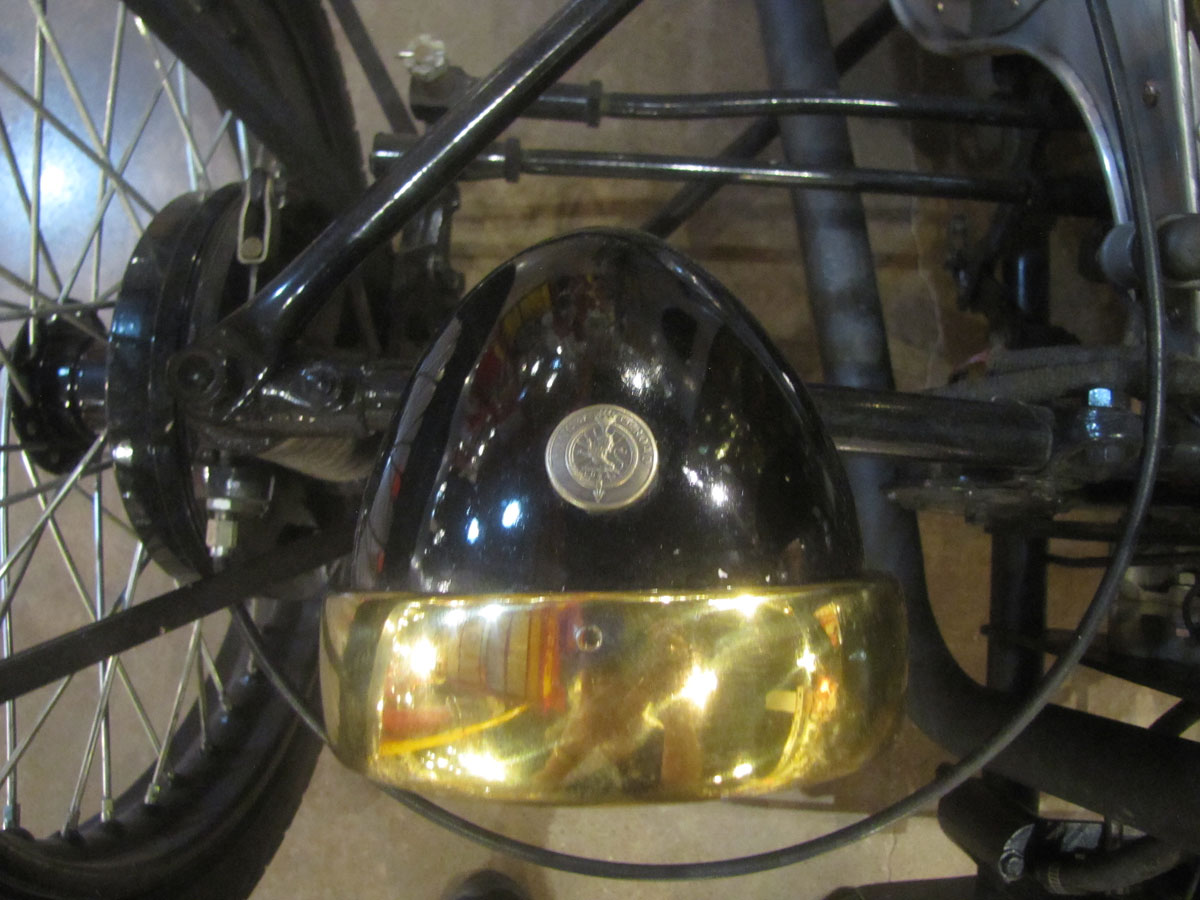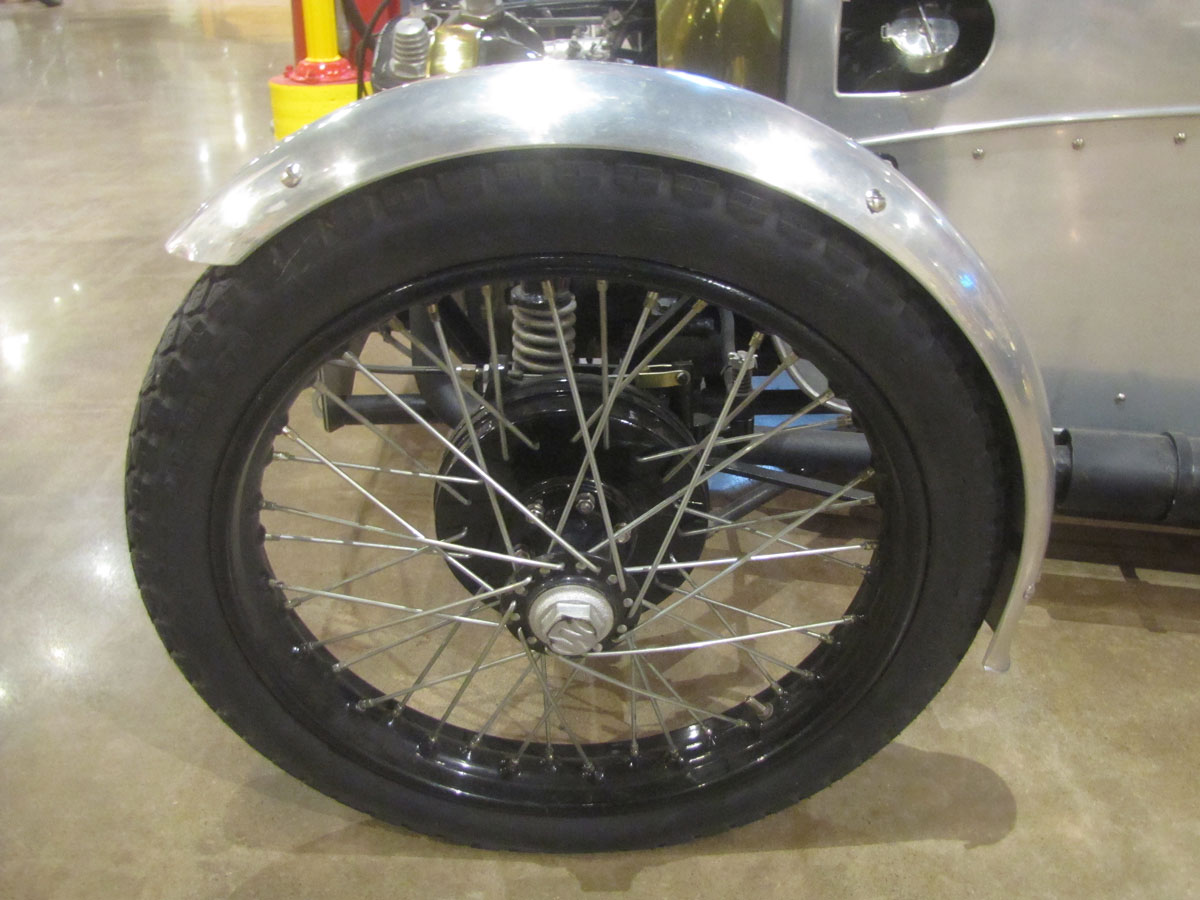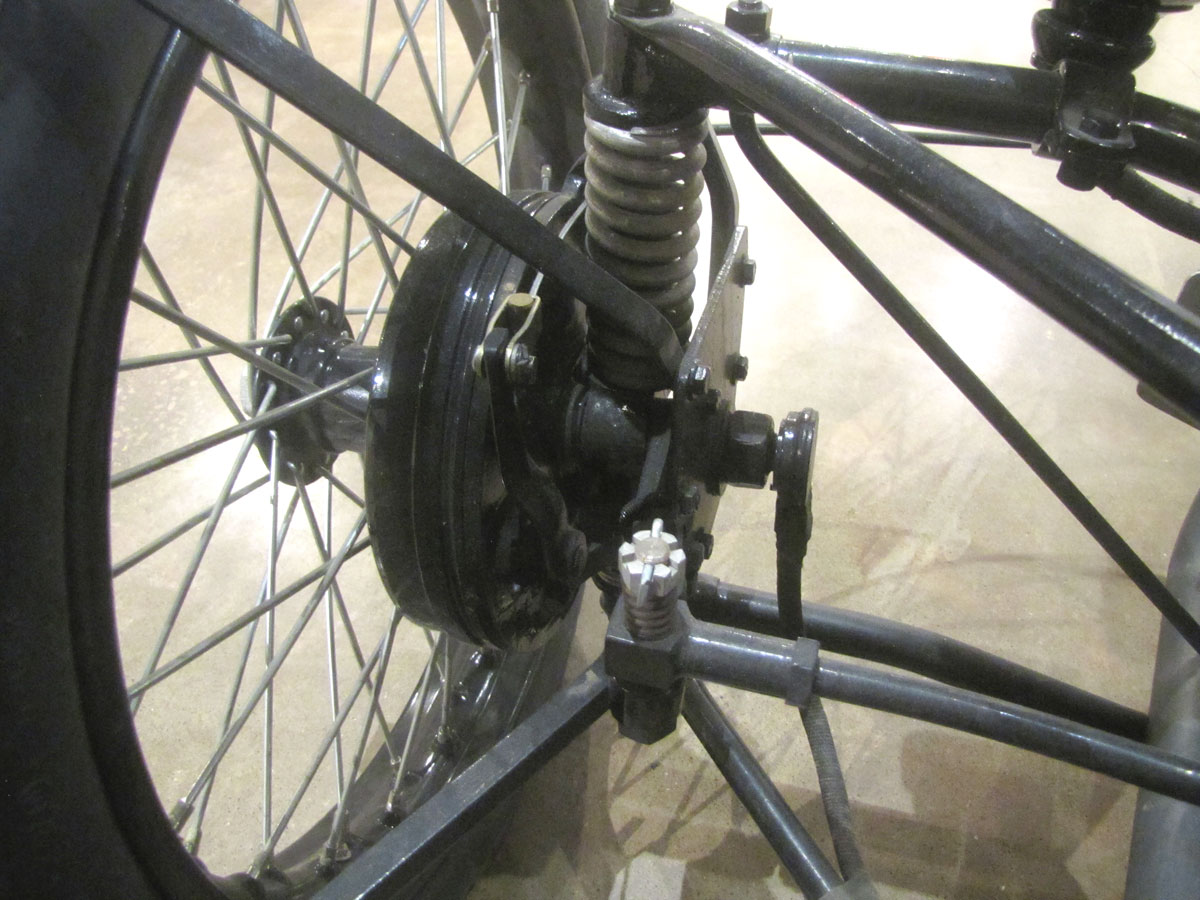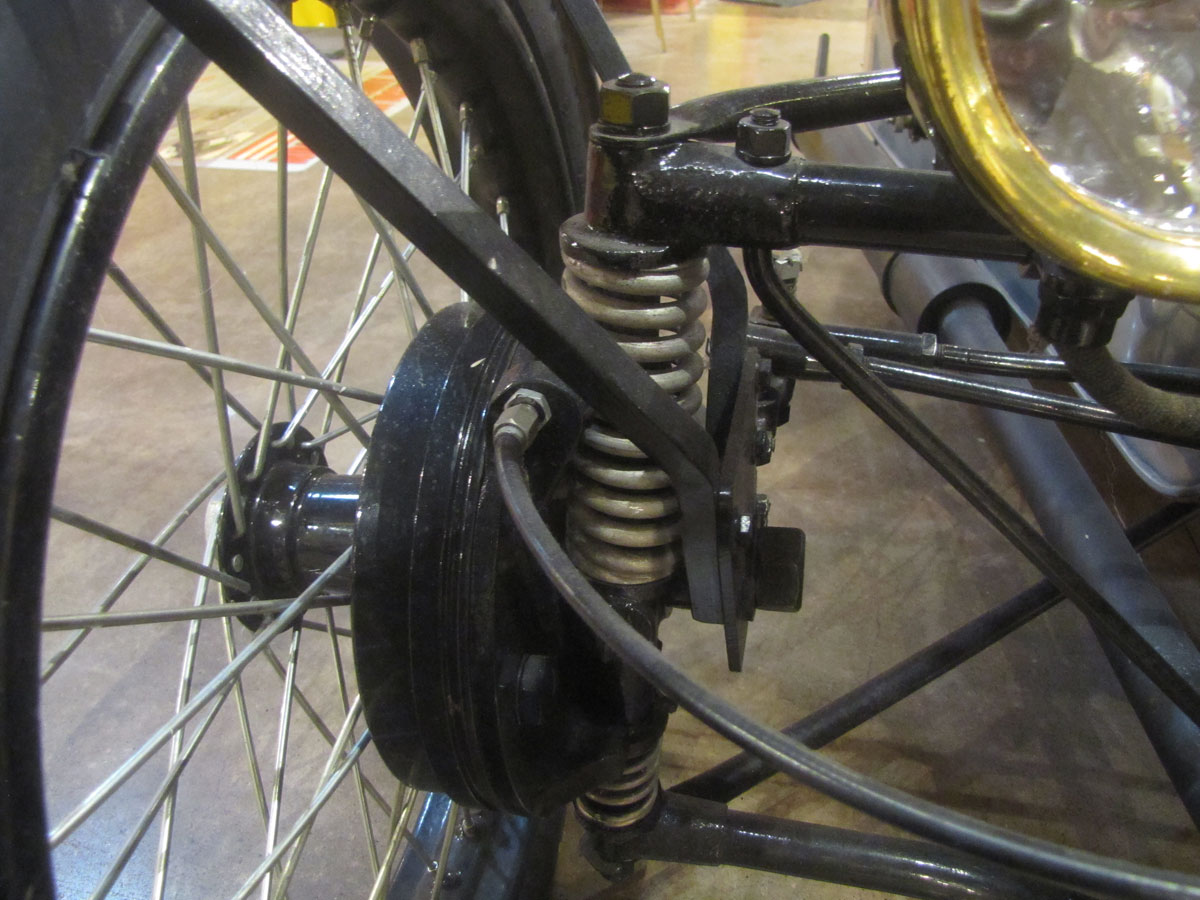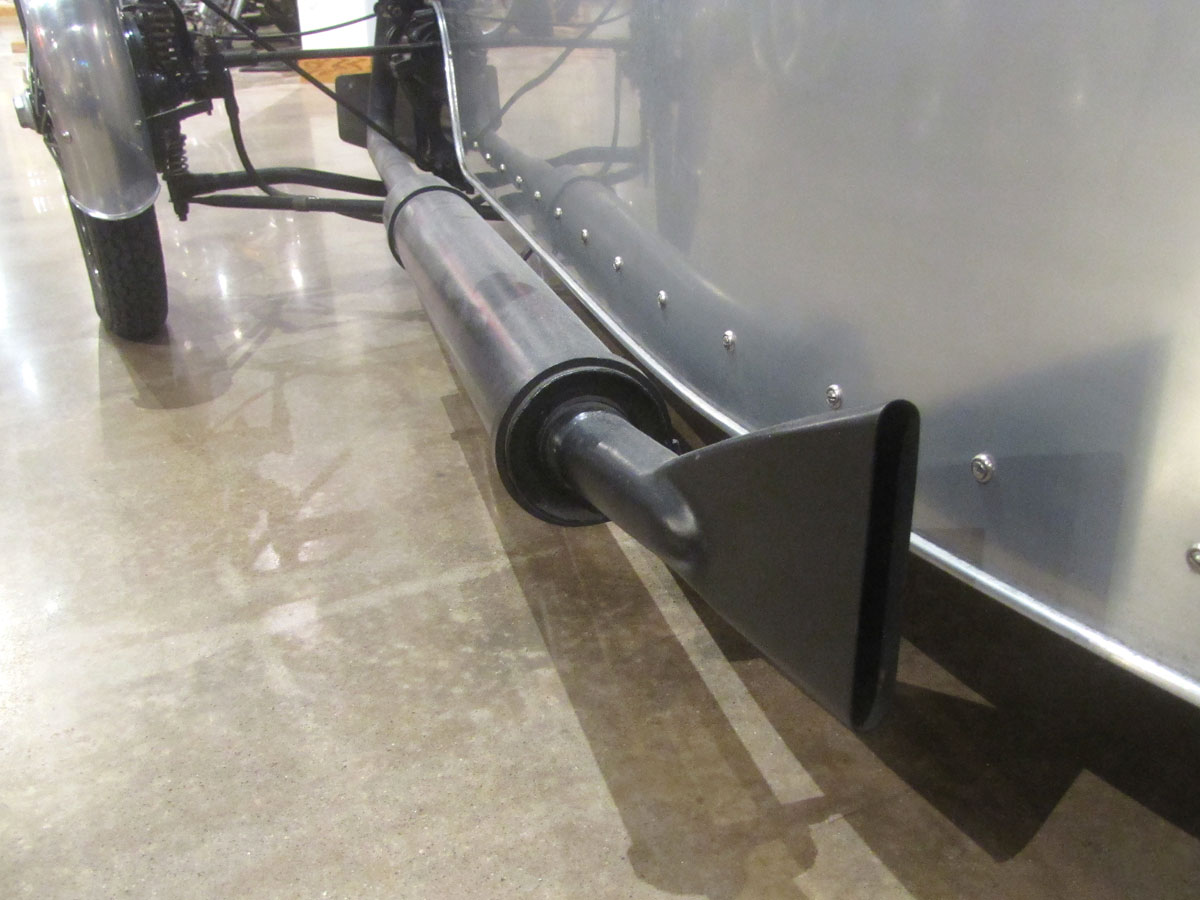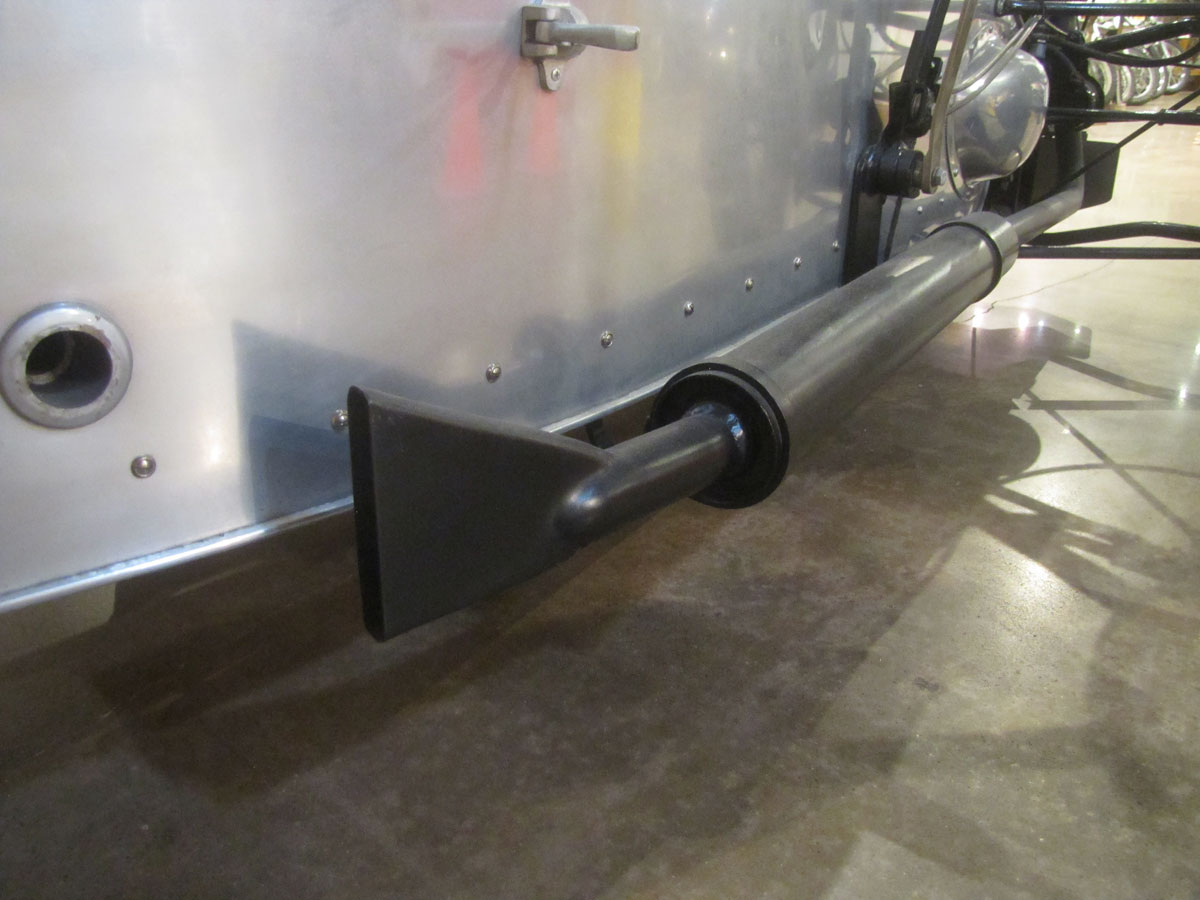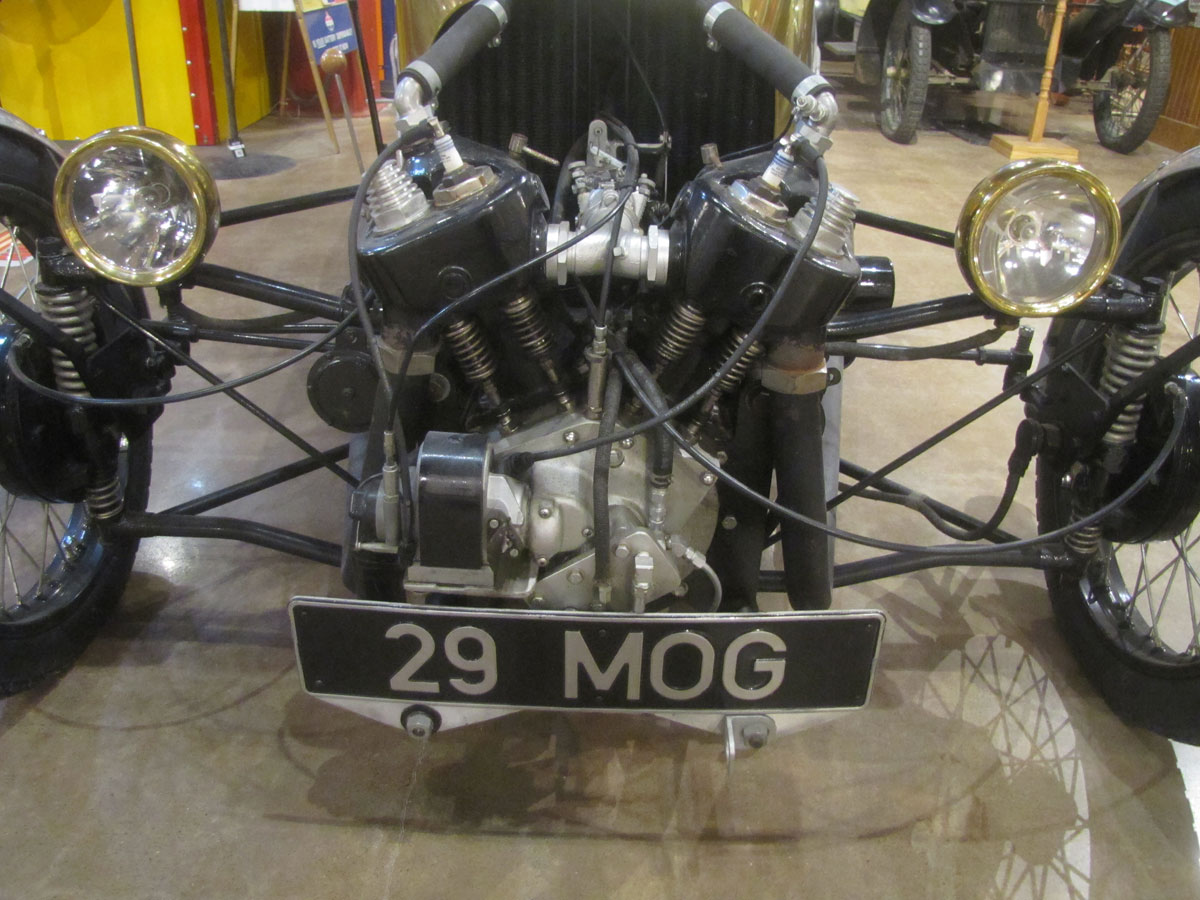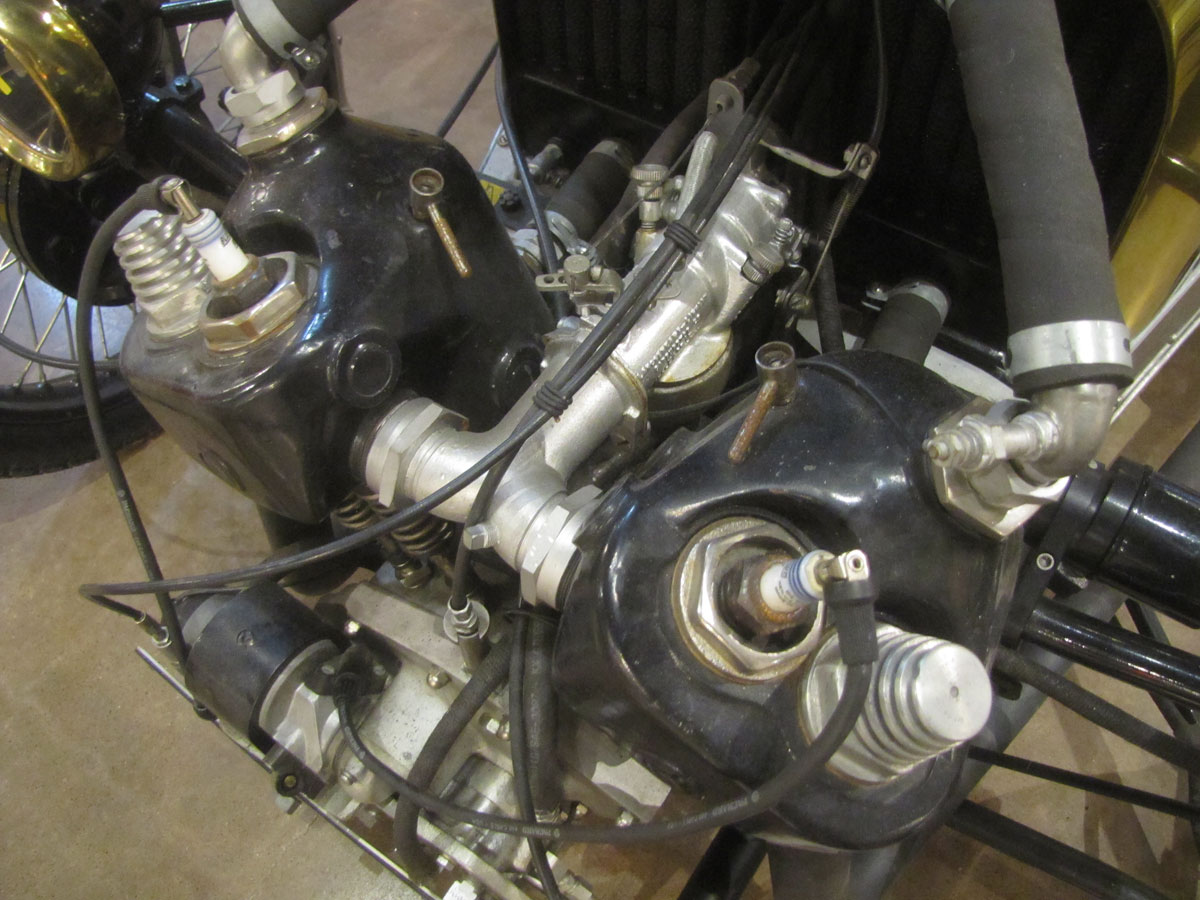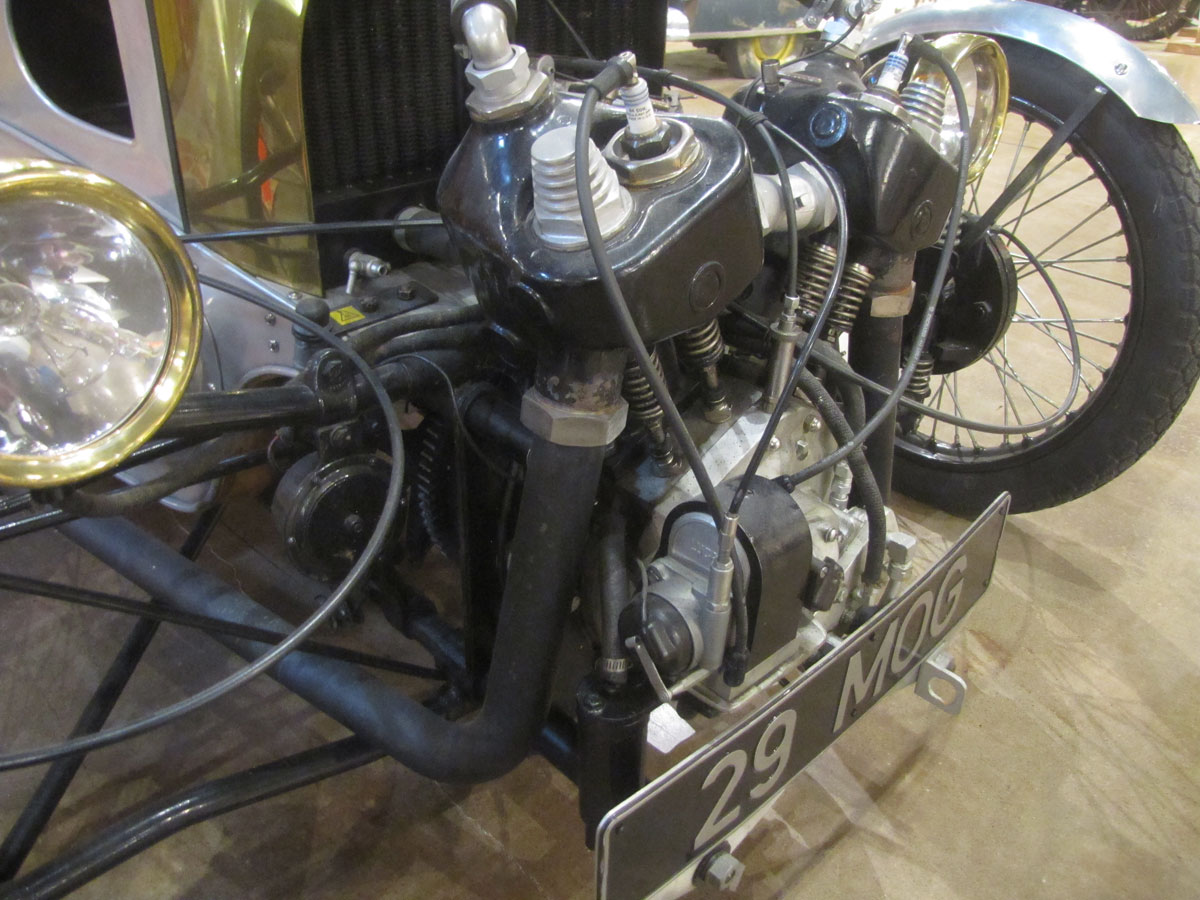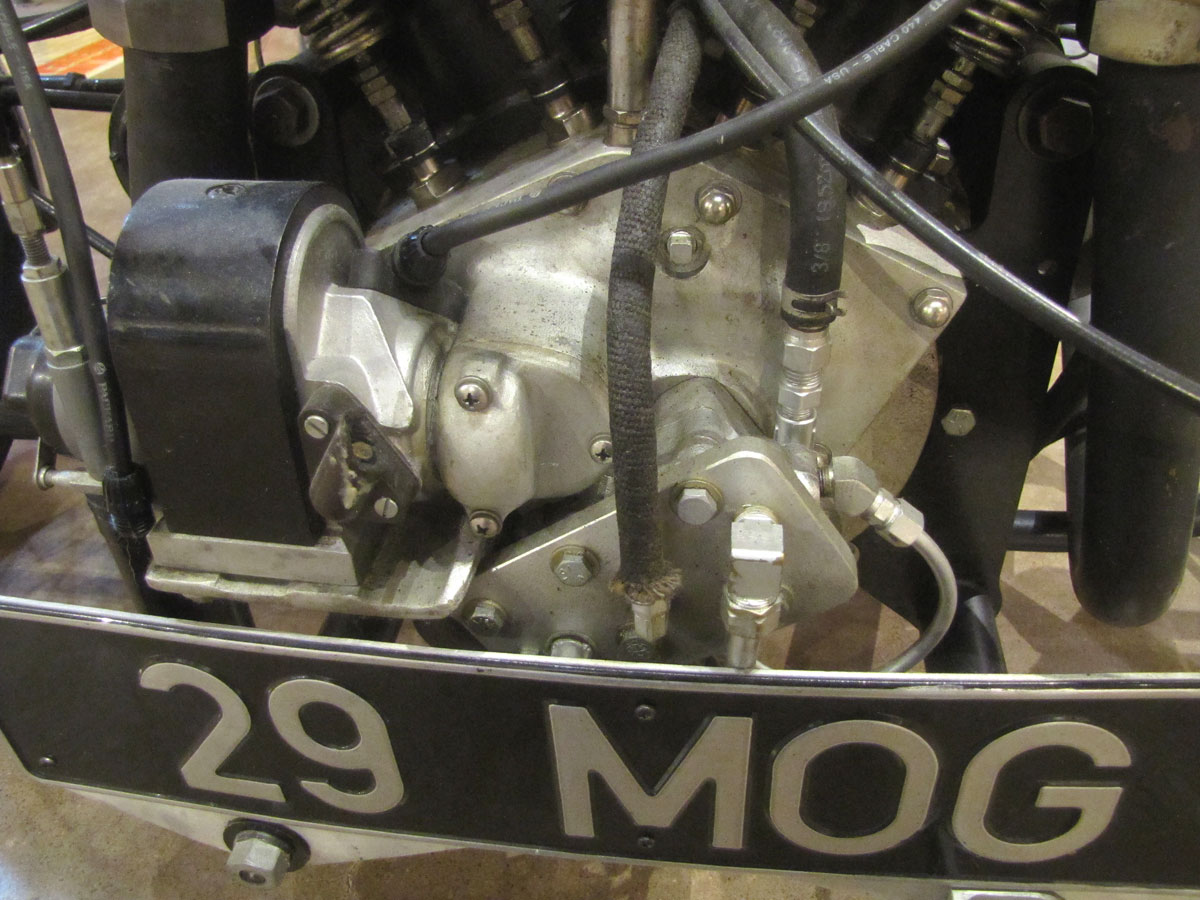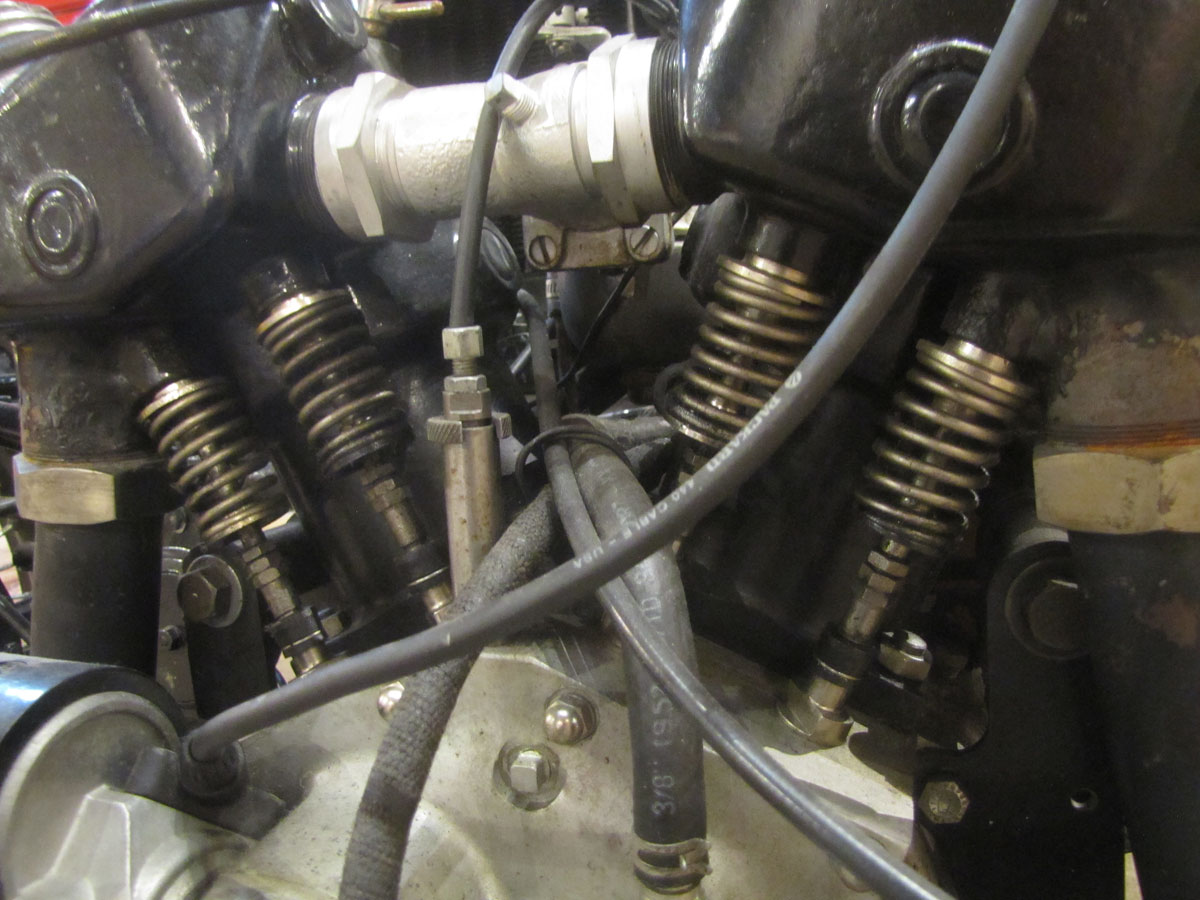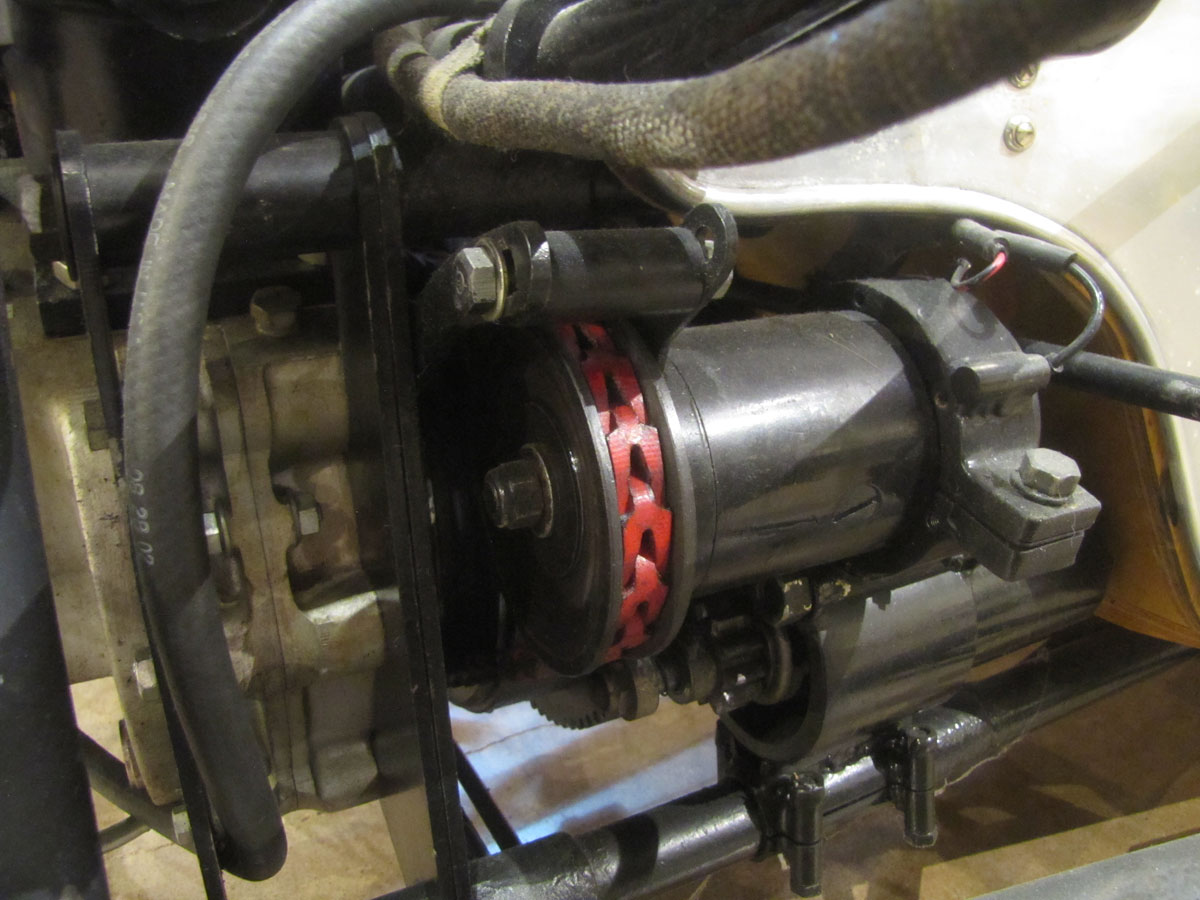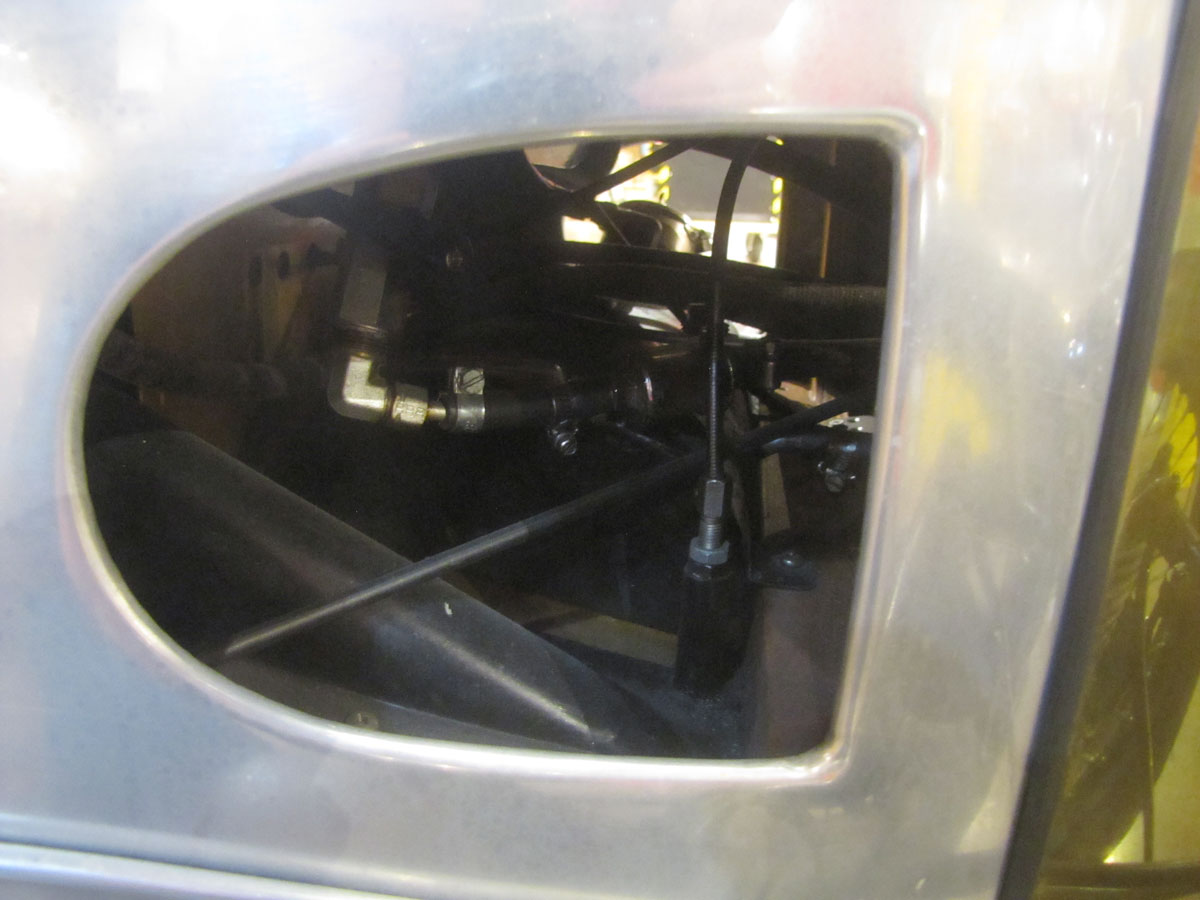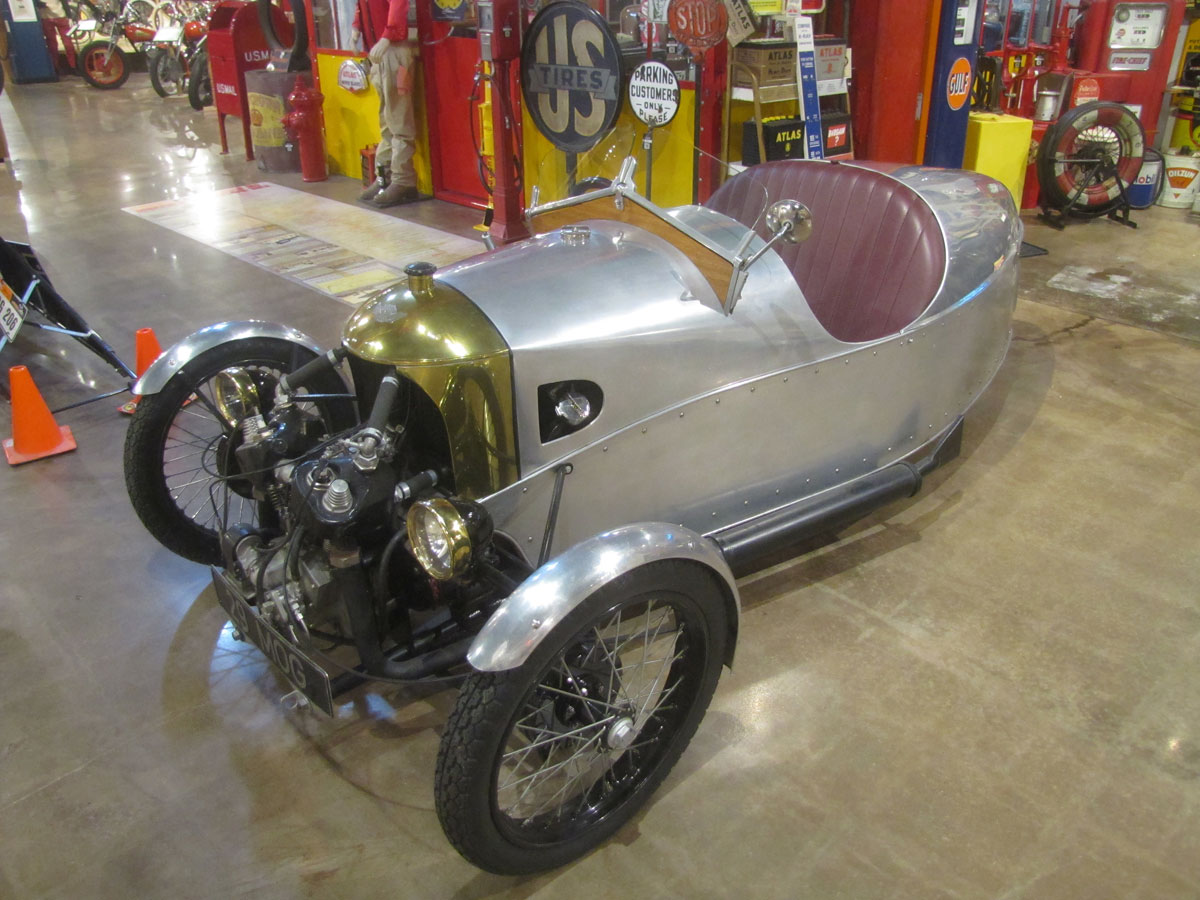
In 1908 English engineer Harry Morgan began developing his first three-wheeler, aimed at trials competition for the 1909 season in Malvern, Worcestershire England. The core of his three-wheeled “cycle car” design, the Morgan Runabout, was a central steel tube running the length of the car, its power plant, a V-Twin sitting up front driving the rear wheel. The “sliding pillar” suspension was noted as the earliest independent suspension used on a car. A swingarm mounted the chain driven rear wheel. As Morgan’s designs developed, some machines ran a pair of chains to the rear, each transferring a different final drive ratio providing a two-speed drive. Clearly Morgan took some innovative approaches to developing his two passenger vehicle. Morgan’s home country, England, also levied lower road taxes on three-wheeled vehicles, and operator licensing was easier, a sales advantage many British manufacturers took advantage of.
Drum front brakes are used on the Aero now on display at the National Motorcycle Museum, but earliest Morgans had only a band type brake on the rear wheel. As for power-plants, since Morgan sourced other makers’ engines, he could offer range of performance. Engines available during the nearly five decades of manufacture include Matchless, Anzani, Blackburne, Blumfield, M.A.G, Precision, J.A.P. or J.A. Prestwich.
In the 1920s the Morgan continued to have success in racing and was so fast that at Brooklands it was required to start a lap behind four wheeled cars in the same class. Likewise, Morgans were dominant on the trials hills, where they won more medals and trophies than any other comparable machine. The rugged strength of the Morgan and its excellent traction meant that it always performed well on muddy tracks when taking part in British reliability trials.
About 30,000 machines were manufactured at Morgan’s plant in Malvern, England between 1909 and 1953, with a number of others being produced under license by Darmont Morgan in France. Four wheel Morgans came about in 1936 but production and updates of the classic three-wheeler continued. The three-wheeler was revived as a design around 2011 using S&S engines similar to Harley-Davidson’s design. Weight of the new machine was about 1200 pounds.
In most states in America the modern three-wheeler was classed as a motorcycle, and Polaris joined the market with a similar concept soon after, the Slingshot powered by a General Motors in-line four. The Morgan company, still operating in its early 20th Century factory complex is successfully manufacturing a range of four-wheeled cars but has announced development of a new three-wheeler powered by a 1.5 liter Ford “Dragon” engine sending power to the rear wheel via a Mazda five-speed transmission and a carbon-fiber reinforced belt. It’s said that engineers planned for this design to be easily adapted to electric motor power.
This fine 1929 Morgan Aero will be among hundreds of motorcycles and thousands of pieces of memorabilia offered in the John Parham Estate Collection Mecum Auction at the National Motorcycle Museum, Anamosa, Iowa, September 6 – 9, 2023. Watch for information on the Mecum Auctions website, Mecum.com For schedule information or to register as a bidder for this and all Mecum events, visit Mecum.com, or call (262) 275-5050 for more information.
Technical Details:
- Engine: J.A.P. V-Twin, Side-Valve, Water-Cooled
- Ignition: Magneto
- Carburetor: Linkert
- Cooling System: Water / Brass Shell Radiator
- Electrics: 6 Volt, Generator
- Drive: Chains to Rear Wheel
- Suspension: Sliding Pillar Front, Swing-Arm Rear
- Frame: Tubular Steel
- Brakes: Drum Front, Band Rear
- Body: Aluminum
1234567891011121314151617181920212223242526272829
The post 1929 Morgan Aero appeared first on National Motorcycle Museum.

